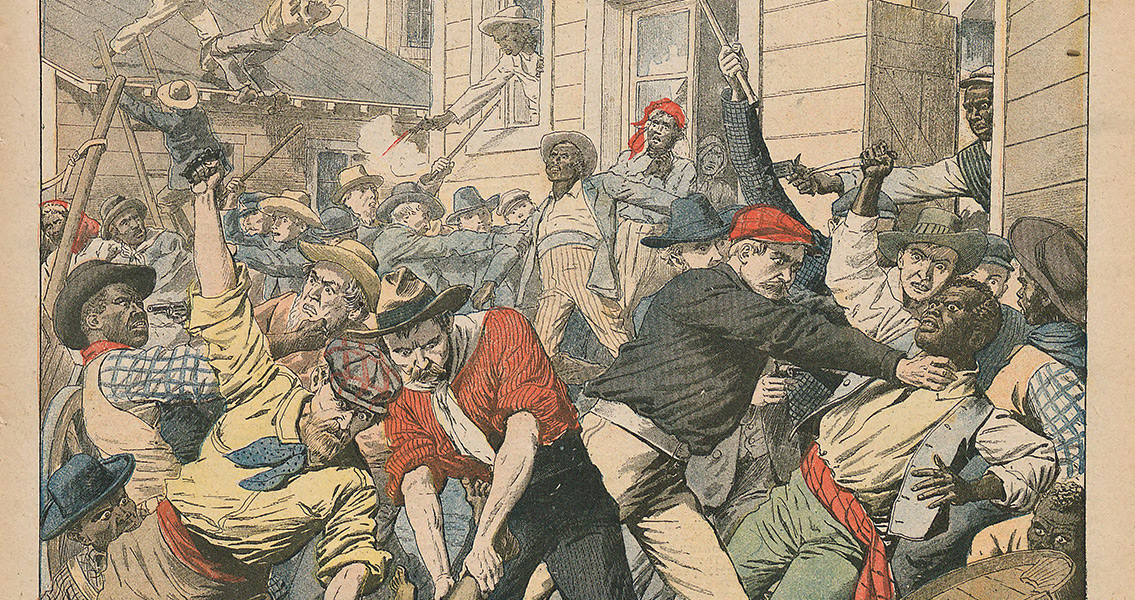<![CDATA[The Atlanta Race Riot erupted on 22nd September, 1906. Although the culmination of a diverse mix of long brewing tensions and complex social issues, the violent events are also a sobering reminder of the dangerous hysteria which can be created by the media. No race fueled riot had ever taken place in Atlanta, the state capital of Georgia, prior to 1906. A wealthy city and the business hub of the region, it was often held up as the model city of the South. Atlanta's turn of the century economic boom meant that many believed its white and African-American population had reached a peaceful, if segregated, coexistence - nullifying the threat of violence and interracial civil unrest. As more and more people flocked to the affluent city however, its beleaguered infrastructure struggled to cope. Between 1900 and 1910 Atlanta's population surged from 89,000 people to 150,000. The black population more than tripled, from 9,000 to 35,000 between 1880 and 1900, leading to a drastic change in demographic which increasingly tested the assertion that black and white people were living together harmoniously in the city. The influx of migration to the city increased competition for jobs, weakening workers' bargaining position and leading to growing unemployment. As is so often the case in such situations, paranoia of 'the other' led to heightened tensions, as irrational resentments started to form between the black and white communities. Local authorities responded to the growing tensions by expanding the Jim Crow laws in the city. The legislative changes heightened segregation in Atlanta, reinforcing separate black and white neighbourhoods while creating separate public transport and school systems. Complex political factors also played a key role in the growing unease in the city. The black community in Atlanta had developed its own rich cultural and intellectual life, built around the city's six black colleges. Unlike many other black communities in the South, that in Atlanta had managed to hold onto the voting rights which had been won during the Reconstruction period, allowing its members to become a potent political force. In this context, the 1906 governor election which saw both Democratic candidates publicly state their intention to disenfranchise the city's entire black population, was a clear attempt to win white votes by attacking the gains made by the black community, adding fuel to the already volatile situation. The trigger for the Atlanta Race Riot came when several newspapers published stories of alleged sexual attacks on white women by black men. In response to the stories, a mob of some 10,000 white men formed in downtown Atlanta before surging towards the city's black districts. They violently attacked black men on the street, and vandalised black owned businesses and homes. The initial day of violence only came to an end at 2 am, when heavy rain caused the mob to disperse. Violence resumed the following day, despite the presence of the armed state militia which had been deployed to restore order. Fearing another onslaught of violence, black people began seeking out weapons to defend themselves. Several violent confrontations ensued, as African Americans started to defend themselves and their property from the white mob. On 24th September, one such group of armed African Americans in Brownsville were raided by police who feared they were planning a counter attack, leading to a shoot out, the death of one police officer, and 250 African Americans being arrested by the state militia. Order was eventually restored by the state militia on the 25th September, with casualty estimates ranging from twenty five to a hundred African Americans, and two white people. Even though the riot had deep rooted causes, the majority of historians conclude that the press stories about the sex attacks which triggered the Atlanta Race Riot were mostly completely fabricated or extremely exaggerated. This, alongside the claims in the press by the gubernatorial candidates which helped stoke the tensions between the communities, provides a powerful example of the potential of an irresponsible media to trigger dangerous civil unrest. ]]>
Newspaper Reports Start Atlanta Race Riot
